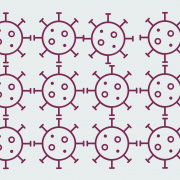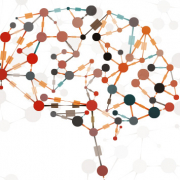Key genomic technologies of 2020: fighting Covid-19
In the first of two articles reflecting on this year, we look at how genomics became central to tackling an unprecedented global pandemic
Unfortunately, 2020 has been defined by Covid-19. The pandemic, which has swept across the globe and affected almost every aspect of the way we live, has challenged citizens, governments and healthcare services alike.
Genomics has been a stalwart of our efforts to understand and tackle the virus. Here, we look at its role in techniques and technologies that have been vital to the effort.
PCR: the unsung hero
Polymerase chain reaction (PCR) is not new, but deserves recognition because the Covid pandemic would look very different without it.
PCR is an extremely common laboratory technique used to make, or amplify, thousands of copies of a DNA sample very quickly. This allows for it to be studied in finer detail or to be used in other laboratory processes. PCR has been the workhorse behind most of the technologies used to either study the virus or identify positive cases.
When labs began the task of trying to understand the virus’s genome, PCR was used to ‘bulk up’ genetic material from the virus (in this case RNA, converted to DNA for PCR) so that scientists had enough to perform genomic sequencing. Sequencing allowed us to obtain the full picture of the virus’s genetic code, and the speed with which this was done has been vital to both mass testing and public health monitoring and to the development of treatments: once you understand the virus’s genetic make up and the proteins it produces, it becomes clearer what strategies are needed to tackle it (such as the new vaccines, covered below).
Many of the first diagnostic tests for Covid-19 were PCR-based, with specific regions of the viral genome amplified from patient samples to identify positive cases. Even now, PCR is still an important step in sequencing protocols all over the world as the virus’s spread and evolution continues to be closely monitored.
There is no question that without PCR many more lives would have been lost.
Third-generation sequencing: faster, easier testing?
Nanopore sequencing is a kind of long-read, or third-generation, sequencing that unlike next-generation sequencing (NGS) – which chops up DNA into short strands, sequences them and then uses software to piece the fragments into a full sequence – can read long nucleotide sequences directly.
Because Sars-CoV-2 has a relatively small genome, it can be sequenced in a single read using nanopore. This advantage, and the fact that the machines are small and portable, means that nanopore is particularly well suited to a constantly changing situation where real-time data is so vital.
We reported in April that nanopore technology had already been adopted by the Covid-19 Genomics UK Consortium. Since then, many other countries have also been using the technology to monitor the pandemic, with one group in Australia developing a strategy for using nanopore to trace the origin of Covid cases by molecular means where the source of infection is unclear.
The Australian team also showed that the nanopore sequences they were able to generate in four hours were over 99% accurate.
The novel vaccine: grounded in genomics
It’s phenomenal to think that we already have a vaccine for a disease no-one had heard of this time last year, let alone the first of a new type of vaccine. Our rapid understanding of the virus’s genome and the proteins it produces was the starting point for vaccine development.
RNA-based vaccines were in development prior to 2020 but none had yet been licenced. Yet the first Covid-19 vaccine being rolled out by the NHS is mRNA based.
A vaccine can be any treatment that presents viral antigens to the immune system in a way that does not cause illness. This primes the immune system, so it recognises the virus and fights back immediately if an infection does occur.
Instead of growing a virus in the lab and then giving a weakened or dead version of it in the vaccine, an mRNA vaccine carries the template to make a single viral protein into our cells, and allows the cell to manufacture the protein, which in turn primes the immune system to fight the virus.
None of this would have been possible if it weren’t for the rapid sequencing of the viral genome and our understanding of the way in which its resultant proteins affect the body – and that is thanks to genomics.
To find out our picks for 2020’s genomic breakthroughs in rare disease and cancer, see the second part of this article.
–









